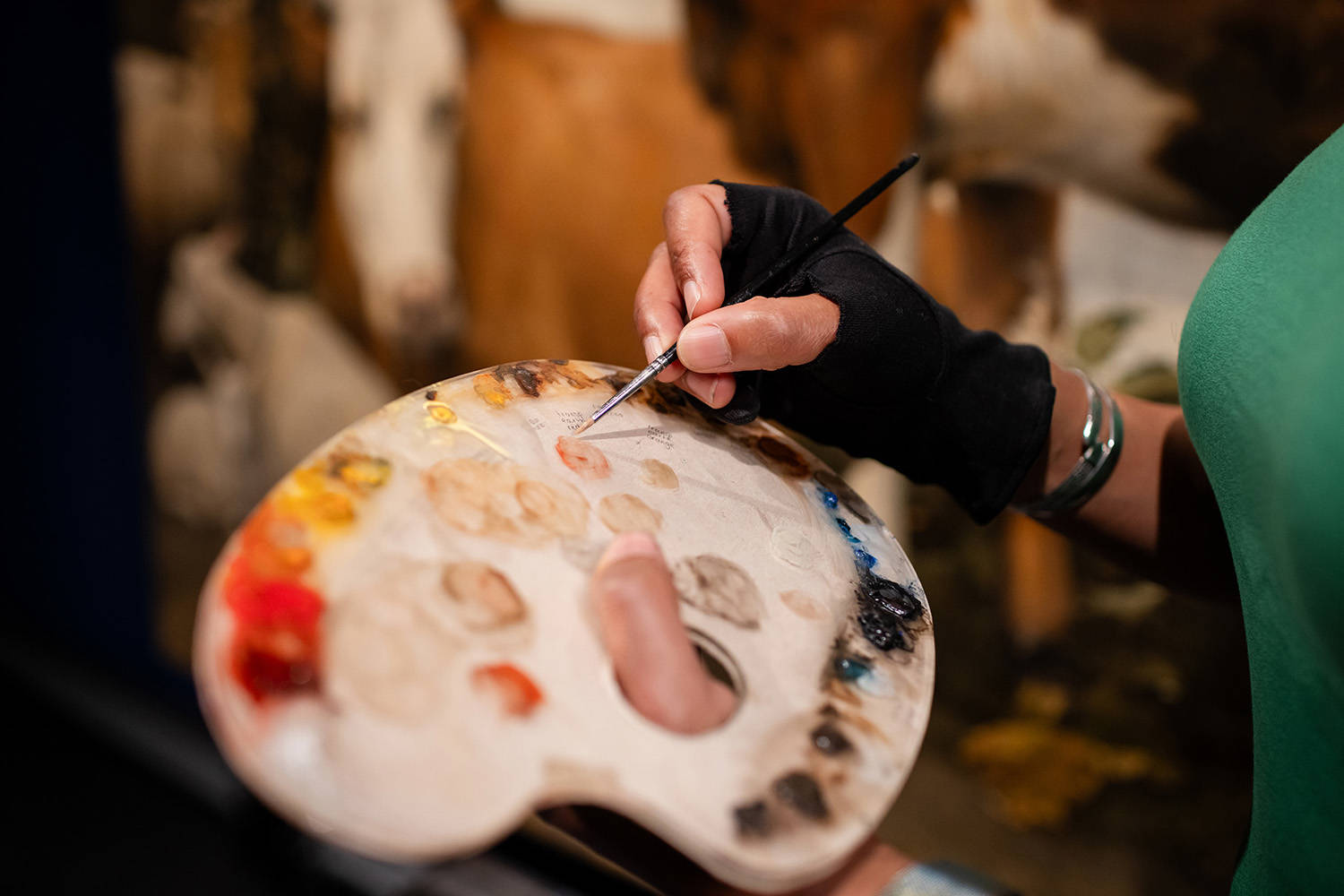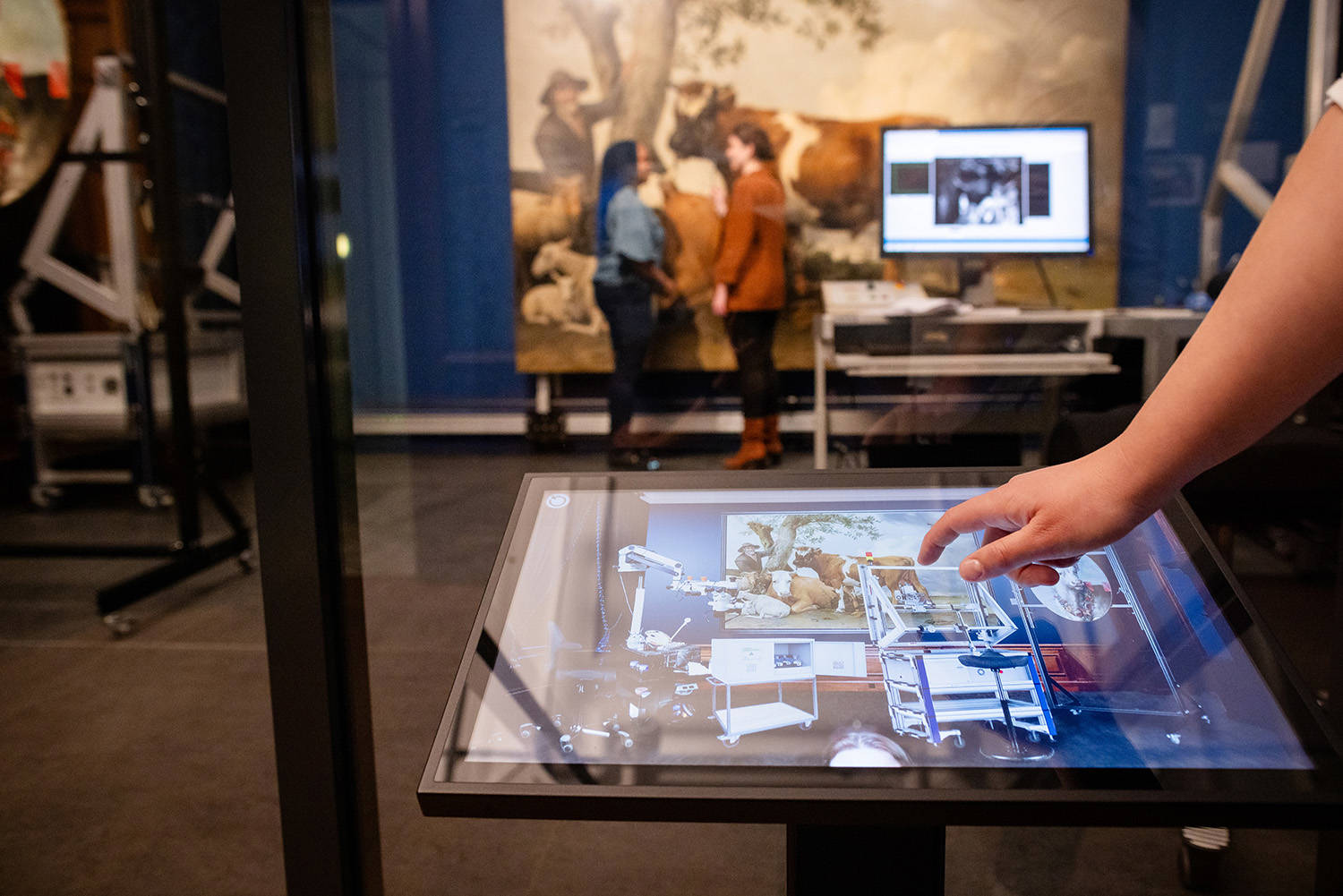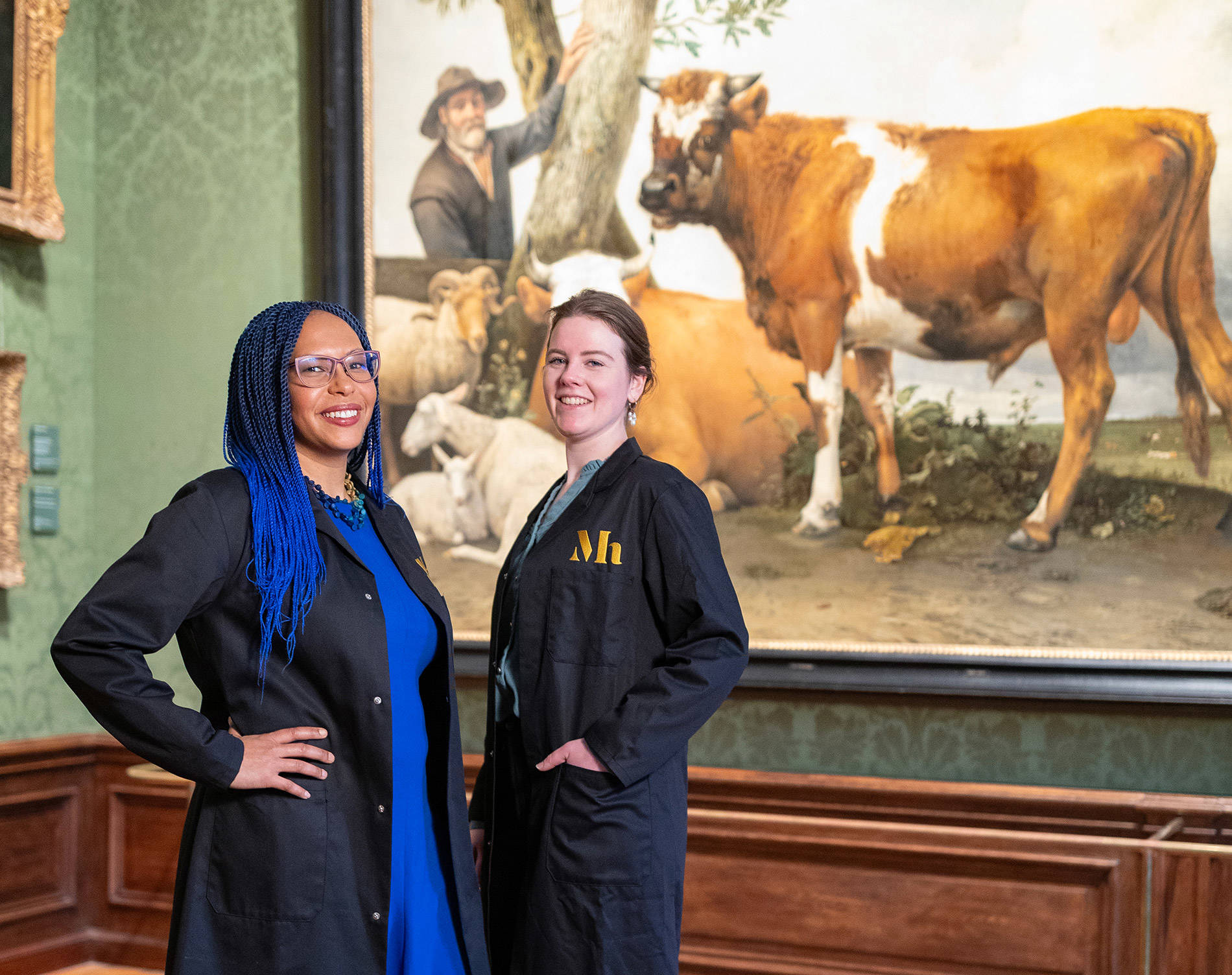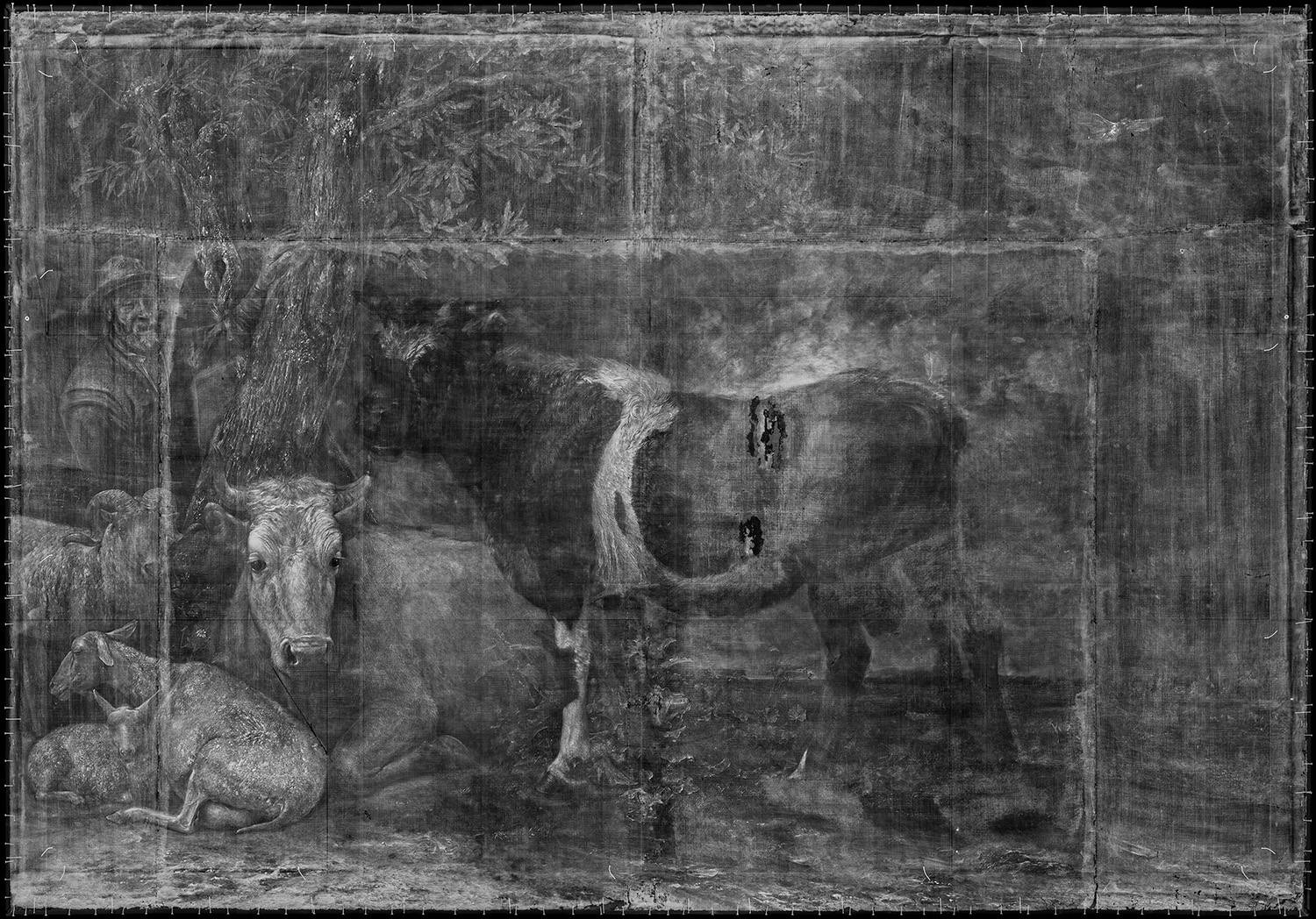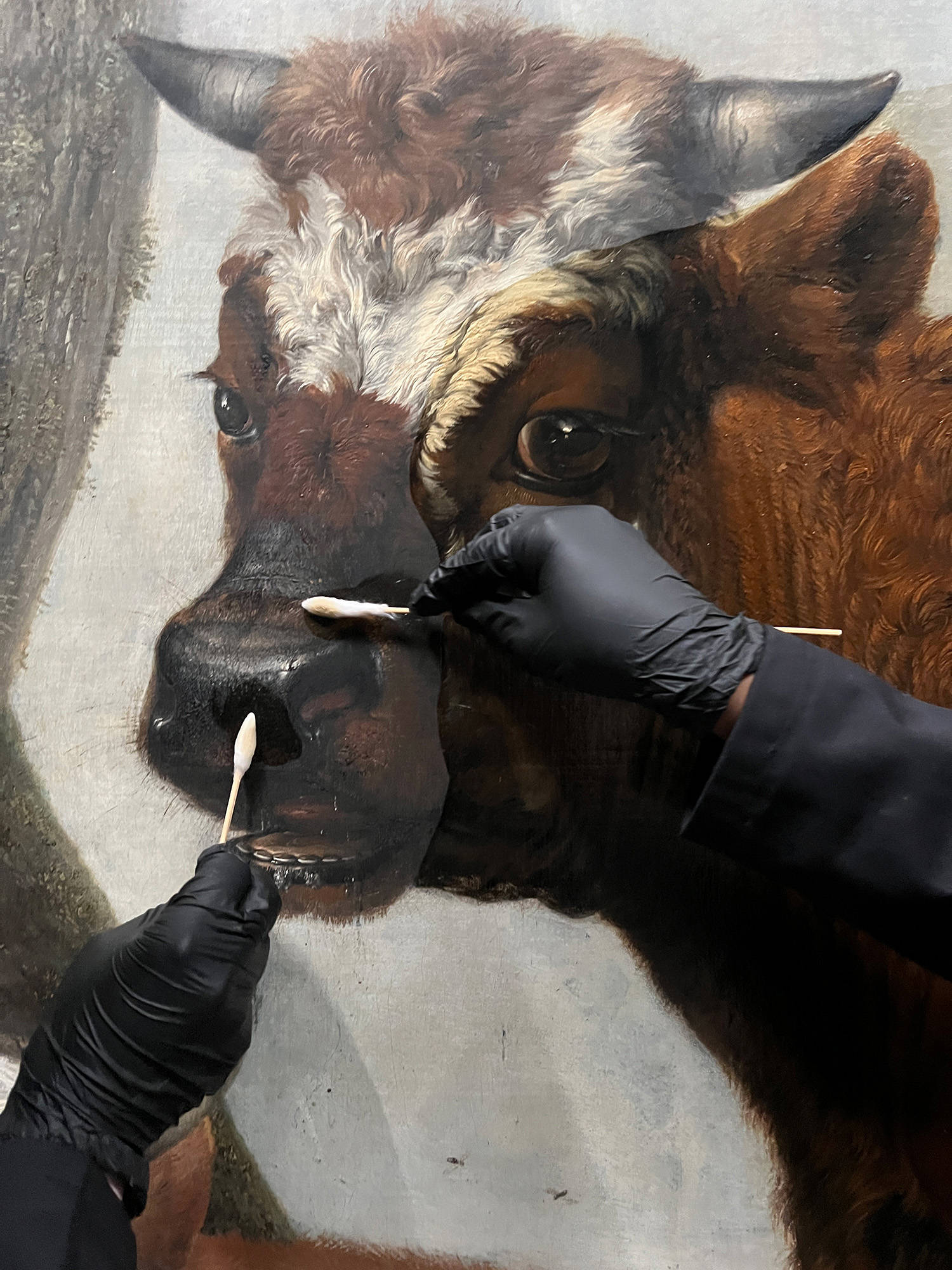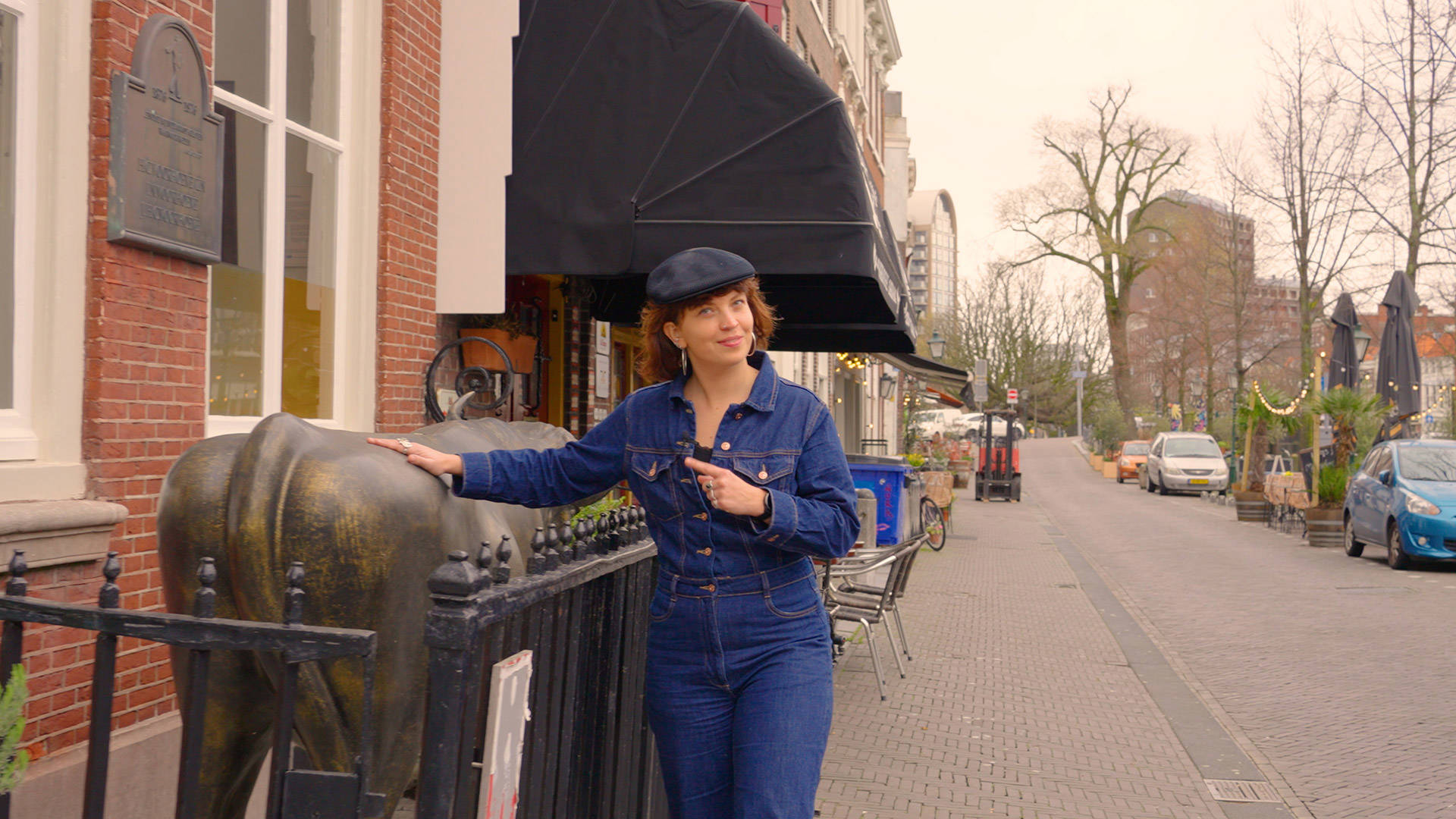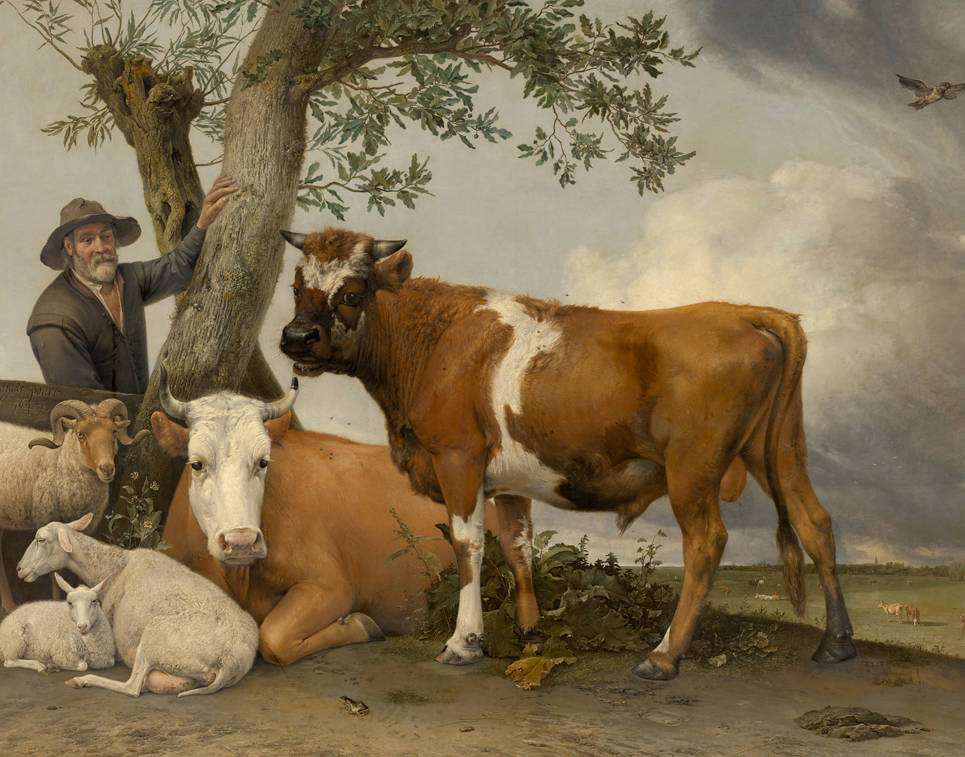
Drop on by for A Peek at Potter at the Mauritshuis! Our conservators are currently restoring the world-famous painting The Bull by Paulus Potter, the largest painting in the Mauritshuis. And that's quite the operation.
So, how does one exactly restore a painting? What choices do our conservators face? And why does it all go so slowly and carefully?
During this presentation, you'll learn all there is to knowabout the restoration process. Ofcourse we'll also share everything we know about one of the most famous paintings in the Netherlands. You can witness the entire process live and stay in the loop online as we unfold the magic. We're making the research accessible, light, and captivating for everyone.
The restoration of the painting started in March 2024, after an extensive preliminary investigation in 2023. We expect the restoration to be completed in 2025. Stay tuned!
Please note: the restoration room will be closed on Tuesday 6 January and the morning of Thursday 15 January.

